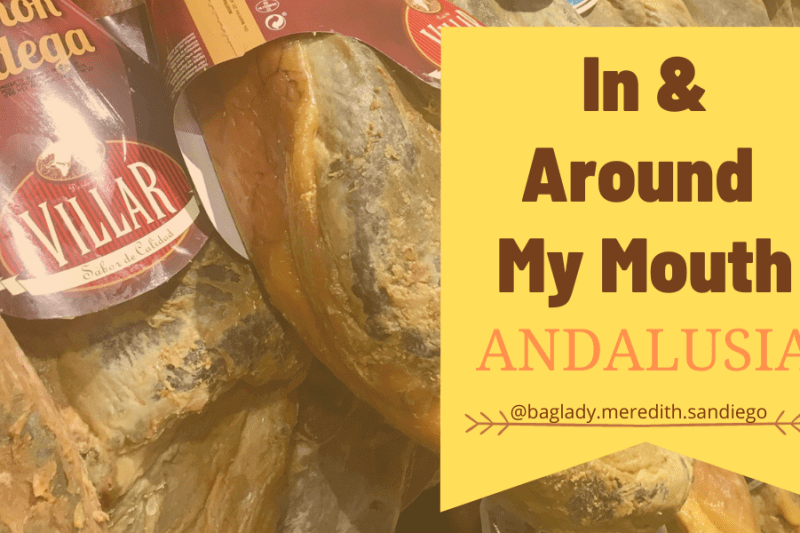Do you travel for food, too? There’s nothing more exciting to gastronomic enthusiasts than trying a foreign dish while traveling. In fact, I struggle to understand those who aren’t fawning over locals to inquire after or try a delicious dish; I’m talking serious side-eye. Arriving in Spain for the first time back in 2013 I was one-track-minded about traditional Spanish cuisine. After relocating to the southern (warmest) region of the romantic European country in 2019, I studied up on what to put in & around my mouth in Andalusia.
No te preocupes (don’t worry), I plan to share with you all of my delectable favorites.
Generally, most folks think of one main ingredient (okay, perhaps two) when they ponder Andalusian yummies: olives and cured meats.
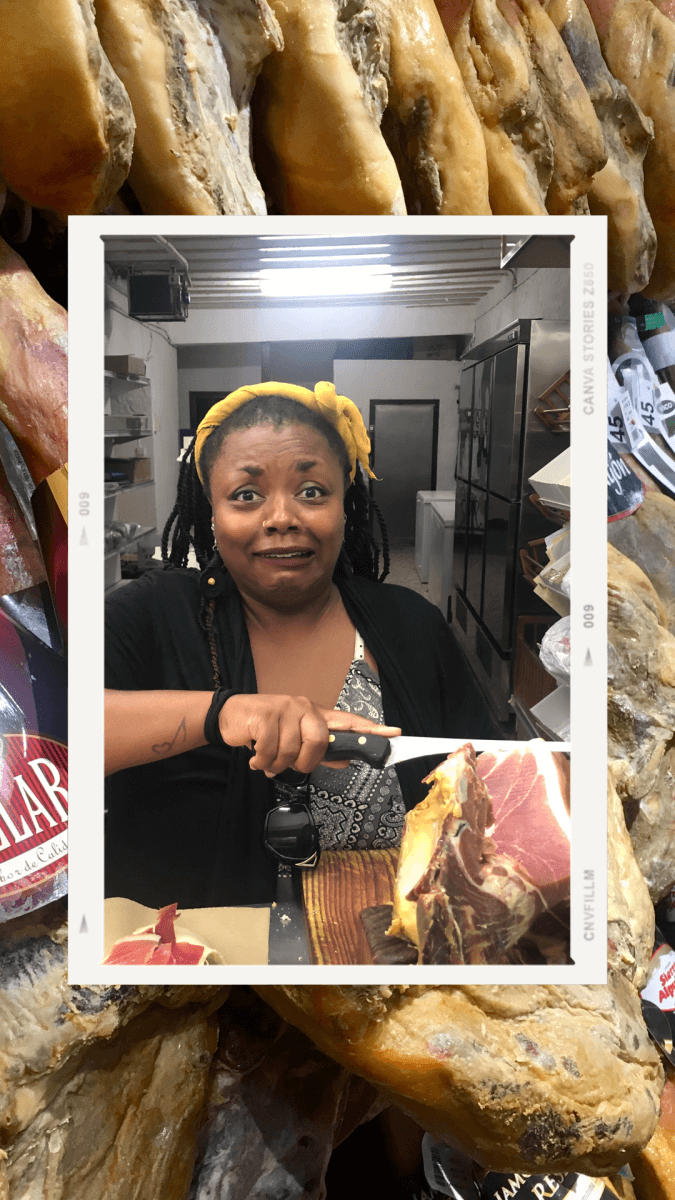
Cured meats in Andalusia
Jamón is hands down my favorite cured meat of the region. Let me explain. Iberia is a peninsula in Europe (Spain and Portugal) that is home to a specific species of pig. This pork meat, Ibérico, is cured and thinly sliced to enjoy on bread, or baked in or on top of different dishes.
Jamón Ibérico is salty slices of heaven right here on earth if you ask me.
Jamón is a staple item in Andalusian households and can be found in supermarkets prepackaged and for sale for as low as one Euro. No joke! Easy to see how it found its way in & around my mouth during the last year and a half living in Andalusia.
I would be remiss if I failed to mention my second favorite, technically tied for first, cured meat, chorizo.
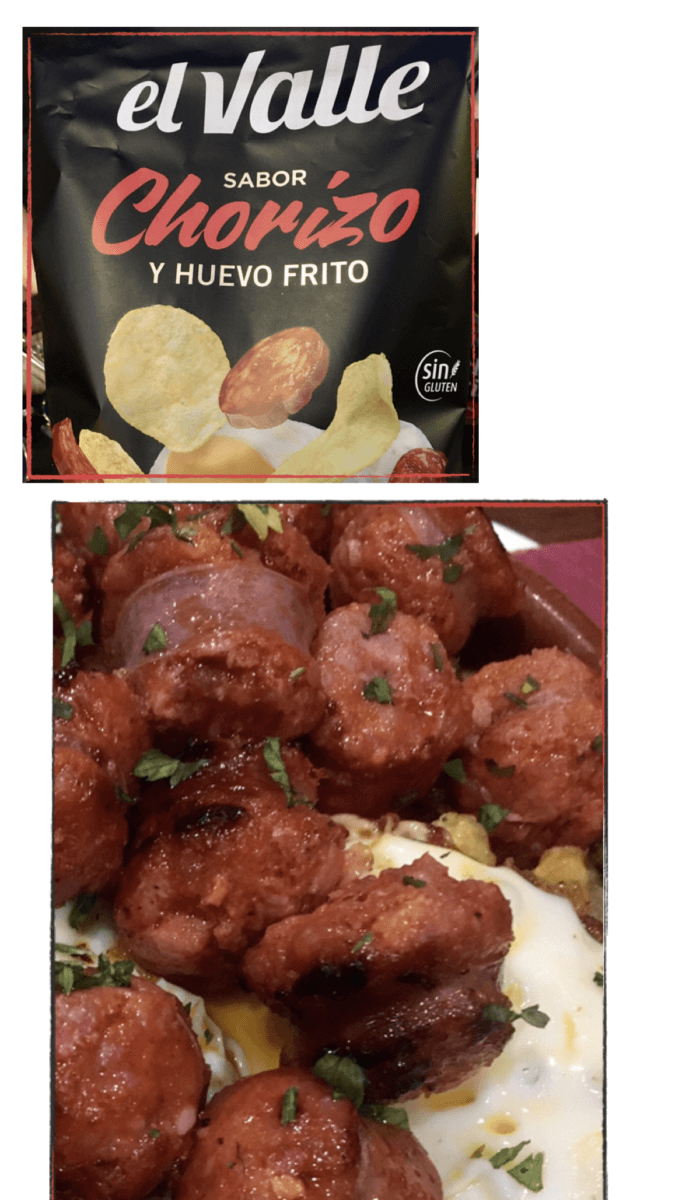
This cured meat is a pork sausage that is historically seasoned with paprika – where it gets its dark reddish coloring – and smoked. Chorizo might as well be formulated into a Trader Joe’s spice and sold to the masses – that is, if it isn’t already.
Don’t want to prepare it yourself? No te preocupes (don’t worry), you can purchase it as flavorful chips, on frozen pizzas, or baked up nicely and accompanied by patatas fritas (fried potatoes) and eggs in a cazuela pot.
Tapas
The word tapas is synonymous with the word Spain. Visiting typical bars in Andalusia usually translates to receiving one free tapa per alcoholic beverage ordered. Some back story. The notion of serving tapas with drinks originated by covering glasses of sherry with small plates. This was an attempt to keep out winged intruders. One brilliant mind improvised filling the empty saucer with olives, sliced cheeses, or meats, and tapas was born.
There is an abundance of restaurants that serve tapas at an additional cost. However, in Andalusia, it’s more common to receive free tapas – as it should be. While some establishments provide choices for tapas, others choose to serve what is churned out by the tiny, yet bustling kitchens.
Tipicos
Depending on your proximity to the coasts, tapas may include fried fishes such as sardines or calamari. Take a detour to the central markets (mercados) for selections of fresh catches and crustaceans galore. It’s likely to find other favorite seafood dishes like Paella nearer to the sea as well.
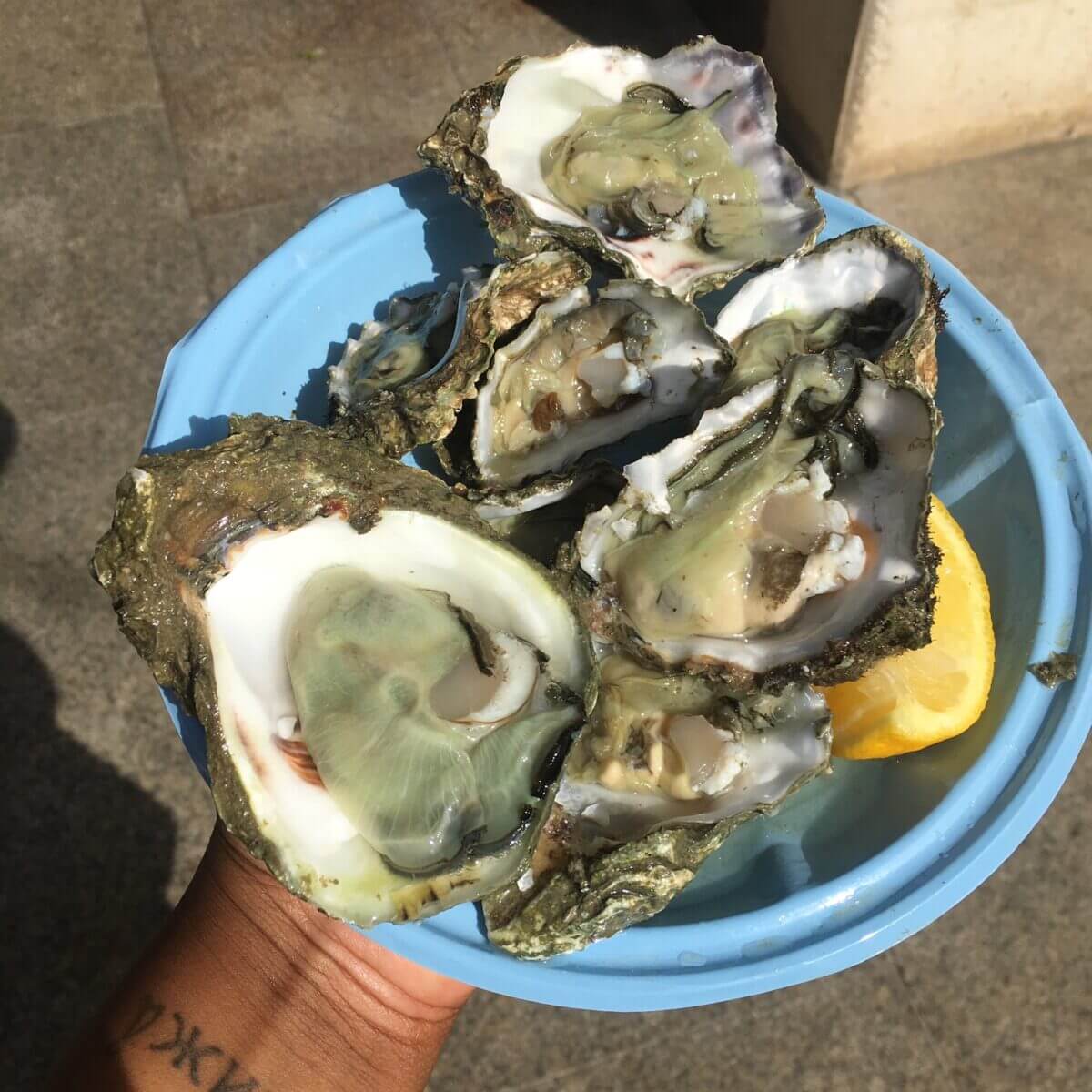
Other traditional dishes are Rabo del Torro (tail of the bull) and cold soups like gazpacho. Each of these can be ordered in full ration sizes or will be included on most menu del dia (menu of the day). Personally, I prefer its cold cousin Salmarejo. It’s also a cold soup, the difference being that it is only tomato based and includes bread.
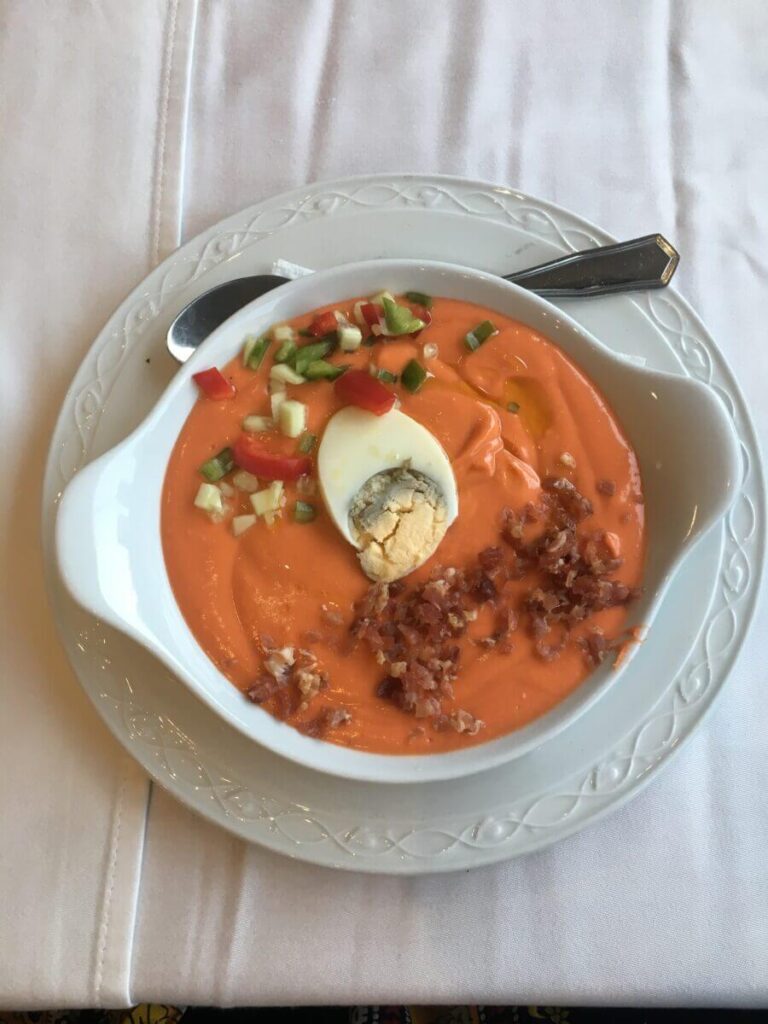
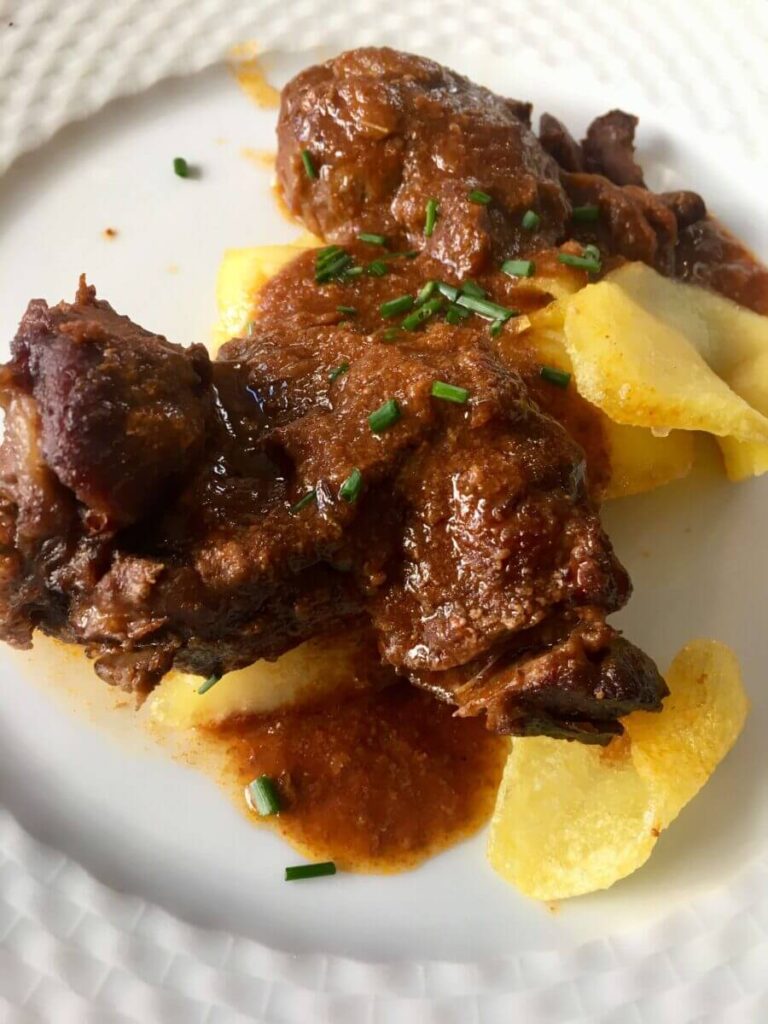
Make the time to dine on the Spanish sweets during your gastronomic visit to Andalusia, you will not regret it.
Postres & sweet drinks, too
Desserts (postres) are a must when experiencing Andalusian cuisine. Besides classics like Arroz con Leche (rice with sweet milk) or churros con chocolate, fan-favorite flan can be found almost everywhere. It’s also worth noting that churros con chocolate is widely consumed as a late (or second) breakfast item. It’s mesmerizing watching how this popular fried dough is made. Just mind the stench of fried grease on your clothes if you stand too close.
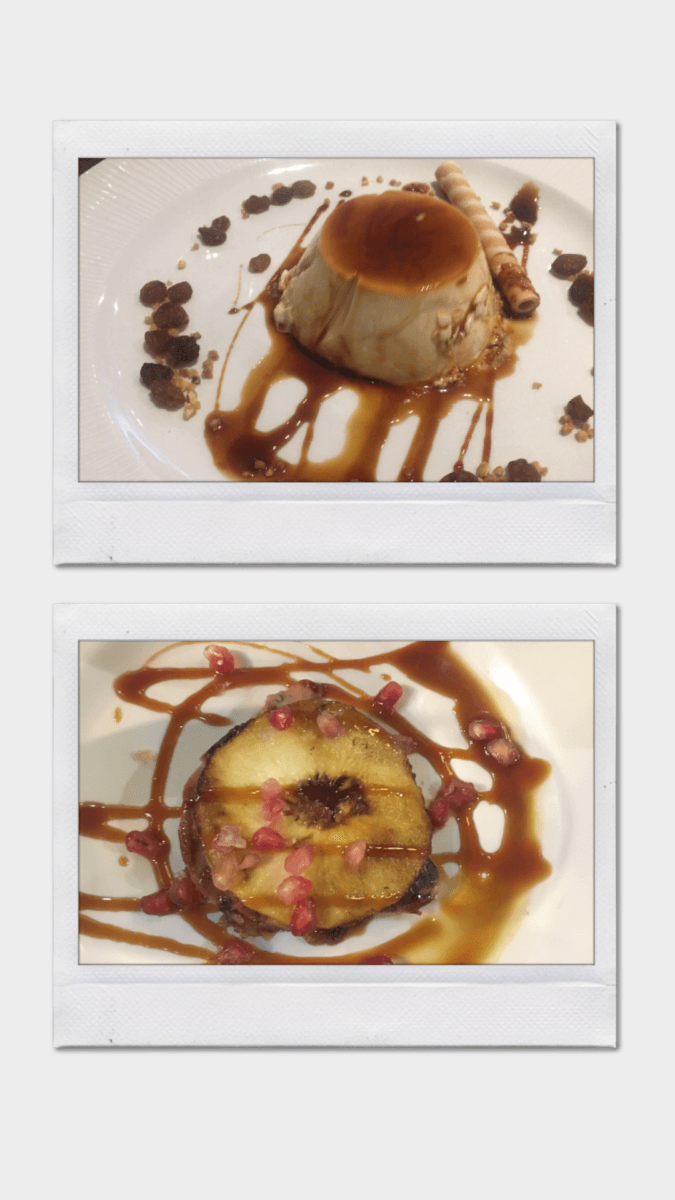
Cerveza is King when it comes to washing down all those treats. It complements fried, salty foods with ease the way that sugar compliments baking. Go to choices include Cruz Campo or Mahout. Order like a local and ask for an Estrella Galicia or an Alhambra Verde (1925). Impress locals further by requesting a Tinto de Verano, especially if visiting during the Summer months, and you’ll be sipping on the local version of Sangria. More like a wine spritzer, this refreshment is best suited with a splash of lemon.
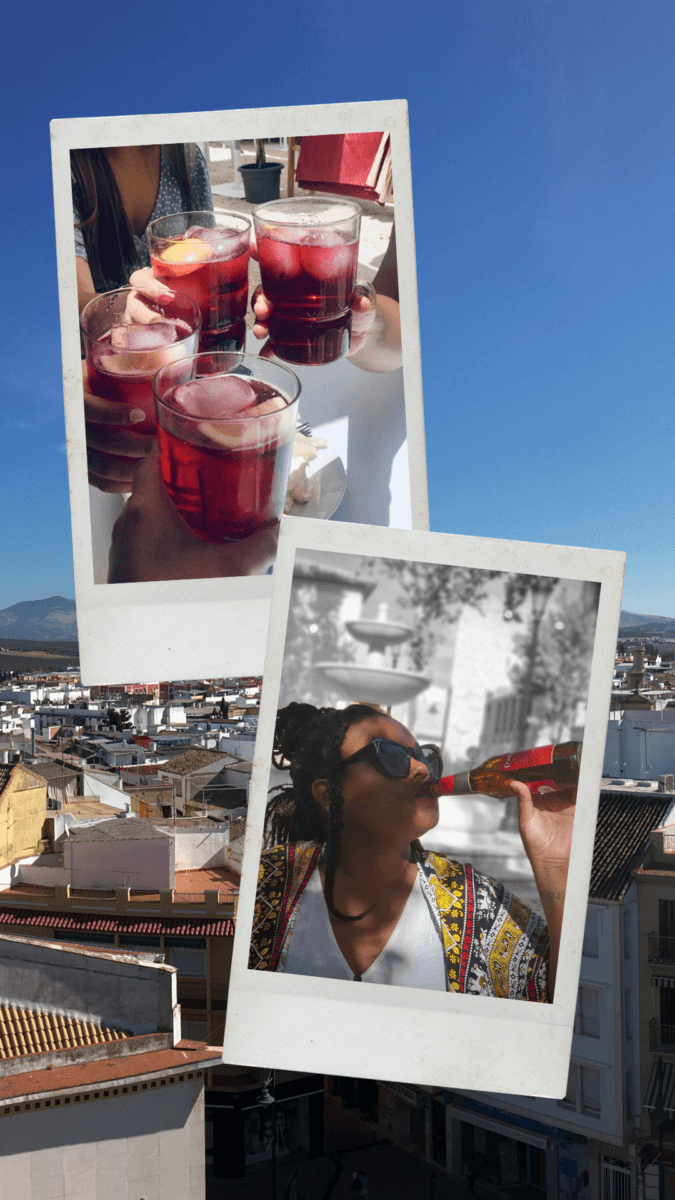
Permission granted
Feeling ready to visit and taste your way through Andalusia? With this expats-eye-view of Andalusian goods to put in & around your mouth, you most certainly should be. Check-in to that hotel or Airbnb and head straight for Old Town. Pick a spot with a view and pull up a seat at an outdoor table and begin ordering like a local. Start with the cured meats and some Cerveza (beer) and work your way through a few tapas. End the introductory meal with some fig flavored flan and enjoy the rush of your taste buds exploding. Don’t say I didn’t warn you!
See more of my explorations in Andalusia last year and more adventure-full videos on my YouTube channel: Meredith San Diego or follow the link below.

